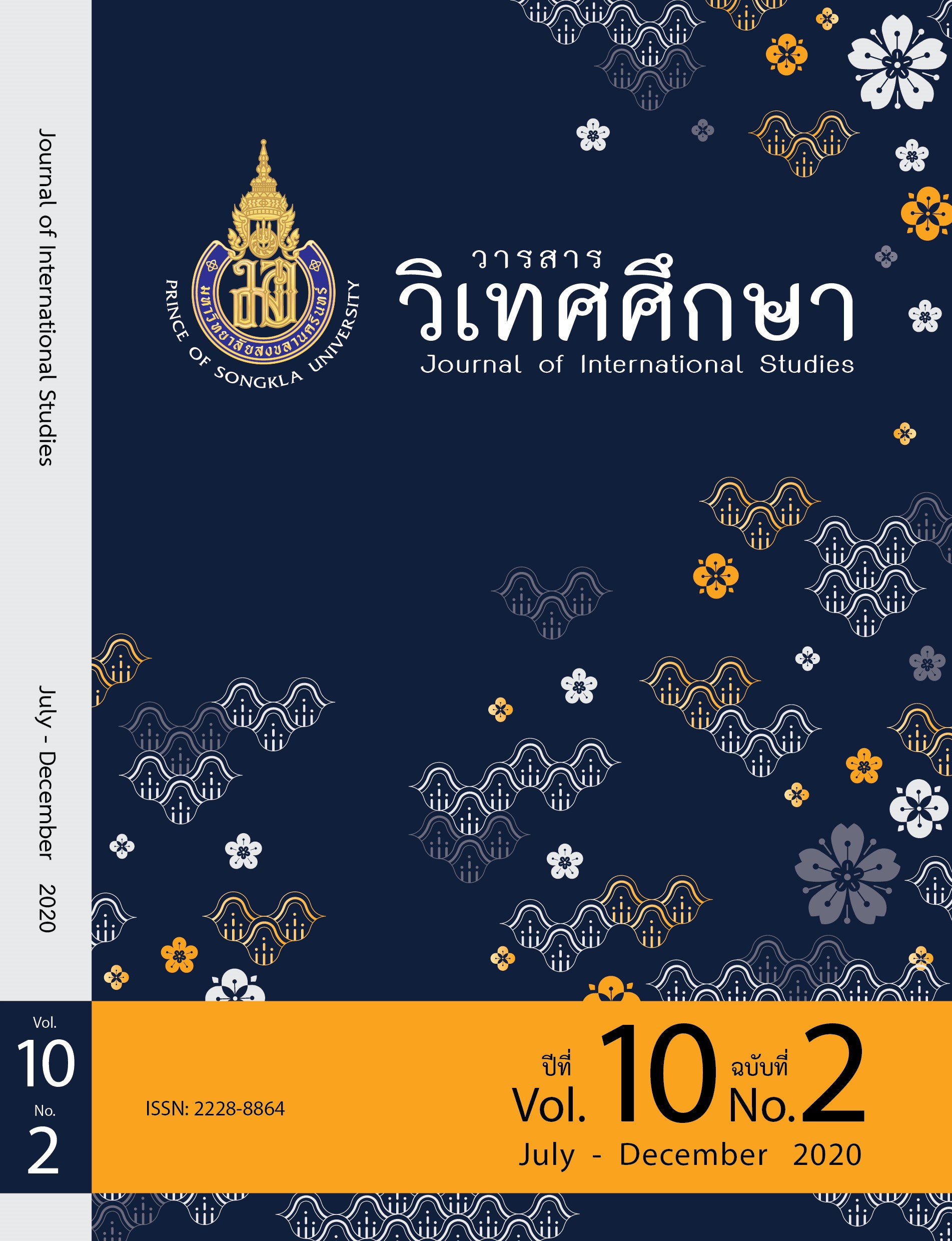An Online Interactive Learning Lesson: Daily Writing of Professional Practicum
Main Article Content
Abstract
ABSTRACT
The purposes of this research were 1) to develop online interactive learning lesson of professional practicum, 2) to compare the learning achievement before and after learning by using interactive lesson of professional practicum, 3) to compare a daily writing with a set criteria of 80% and 4) to study the students' satisfaction with the interaction of professional practicum. A sample group in this research was student teacher trainees majoring in Technology and Educational Innovation Program at Nakhon Pathom Rajabhat University; there were 30 members of the sample group whom were obtained by using cluster random sampling. The research instruments were 1) Online lesson of the interaction of professional practicum, 2) Achievement test, 3) An evaluation form of daily writing and 4) Satisfaction’s questionnaire which was created by the researchers. Statistics used in the research were Mean, standard deviation, and the t - test.
The results of the study were as follows:
1) Online lessons of the interaction have an effectiveness of 82.70/83.20, higher than the 80/80 criteria set.
2) The learning achievement of students after learning by using online interactive lessons was significant at .05 which was higher than before learning.
3) The capability of daily writing after learning by using online interactive lessons was higher than the set criteria (80%) and was significant at .05.
4) The satisfaction of the students with online interactive lessons was at a high level.
Article Details
Statements and opinions expressed in articles herein are those of the authors and do not necessarily reflect the position of the editors or publisher.
Article, information, text, image, etc. which are published in Journal of International Studies, belong to Journal of International Studies. If anybody or any organization would like to use part or whole of them, they must receive written permission from Journal of International Studies before usage.
References
กิดานันท์ มลิทอง. (2543). เทคโนโลยีคอมพิวเตอร์ช่วยสอนในการเรียนการสอน. กรุงเทพฯ: ฟิสิกส์เซ็นเตอร์.
เกรียงไกร พละสนธิ และนรีรัตน์ สร้อยศรี. (2559). การพัฒนาบทเรียนออนไลน์แบบการเรียนรู้อย่างมีส่วนร่วมในรายวิชาการเตรียมการก่อนการผลิตเพื่อพัฒนาทักษะกระบวนคิดอย่างเป็นระบบสำหรับนักศึกษาระดับปริญญาตรี. วารสารการอาชีวะและเทคนิคศึกษา, 6(11). 9-17.
จุไรรัตน์ ดวงจันทร์ และคณะ. (2562). การพัฒนาสมรรถนะการสื่อสารเพื่อส่งต่อข้อมูลทางการพยาบาลโดยใช้บทเรียนออนไลน์สำหรับนักศึกษาพยาบาล. วารสารพยาบาลสงขลานคริทร์, 39(2). 98-112.
เจษฎา บุญมาโฮม. (2562). การเตรียมฝึกประสบการณ์วิชาชีพครู. นครปฐม: มหาวิทยาลัยราชภัฏนครปฐม.
ชัยวัฒน์ ยะปัญญา. (2557). รายงานการวิจัยเรื่อง การพัฒนาบทเรียนออนไลน์แบบปฏิสัมพันธ์เรื่องวิวัฒนาการของสื่อภาพยนตร์วิชาหลักการภาพยนตร์และโทรทัศน์. กรุงเทพฯ: สาขาวิชาสื่อดิจิทัล คณะศิลปศาสตร์ วิทยาลัยเทคโนโลยีสยาม.
ชัยวัฒน์ สุทธิรัตน์. (2559). 80 นวัตกรรมการจัดการเรียนรู้ที่เน้นผู้เรียนเป็นสำคัญ. (พิมพ์ครั้งที่ 7). นนทบุรี: พี บาลานซ์ดีไซด์แอนปริ้นติ้ง.
เชน ชวนชม. (2561). การพัฒนาบทเรียนออนไลน์วิชาเทคโนโลยีสารสนเทศในชีวิตประจำวันเรื่องการใช้งานโปรแกรม Microsoft Office สำหรับนิสิตระดับปริญญาตรีชั้นปีที่ 1 มหาวิทยาลัยบูรพา. วารสารวิชาการ สถาบันการพลศึกษา, 10(3). 195-206.
ธนพงษ์ ไชยลาโภ เอกลักษณ์ โภคทรัพย์ไพบูลย์ และปริญญ์ โสภา. (2559). การพัฒนาสื่อบทเรียนออนไลน์เรื่องการออกแบบเพื่อการผลิตสื่อปฏิสัมพันธ์และมัลติมีเดีย. วารสารวิชาการนวัตกรรมสื่อสารสังคม, 4(2). 134-143.
ประกอบ กรณีกิจ และจินตวีร์ (มั่นสกุล) คล้ายสังข์. (2556). รูปแบบอีเลิร์นนิงแบบผสมผสานโดยใช้บันทึกสะท้อนการเรียนรู้แบบมีปฏิสัมพันธ์ออนไลน์ที่ส่งเสริมความใฝ่รู้และความคงทนในการจำของนิสิตคณะครุศาสตร์ จุฬาลงกรณ์มหาวิทยาลัย. วารสารครุศาสตร์, 41(3). 66-82.
มาเรียม นิพันธุ์. (2553). วิธีวิจัยทางการศึกษา. (พิมพ์ครั้งที่ 3). นครปฐม: คณะศึกษาศาสตร์ มหาวิทยาลัยศิลปากร.
รัฐพร กลิ่นมาลี และดวงกมล โพธิ์นาค. (2562) การจัดการเรียนรู้โดยใช้ปัญหาเป็นฐานแบบออนไลน์สำหรับนักศึกษาระดับปริญญาตรี. วารสารวิเทศศึกษา, 9(1). 59-79.
Kennedy, J. Abichandani, P & Fontecchio, A. (2014). Using infographies as a tool for introductory data analytics education. Retrieved 5 June 2020 fromhttps://www.semanticscholar.org/paper/Using-infographies-as-a-tool-for-introductory-data-KennedyAbichandani/b8974a43e6d5ac2792d070f12da2b36ef6d9d3f2


